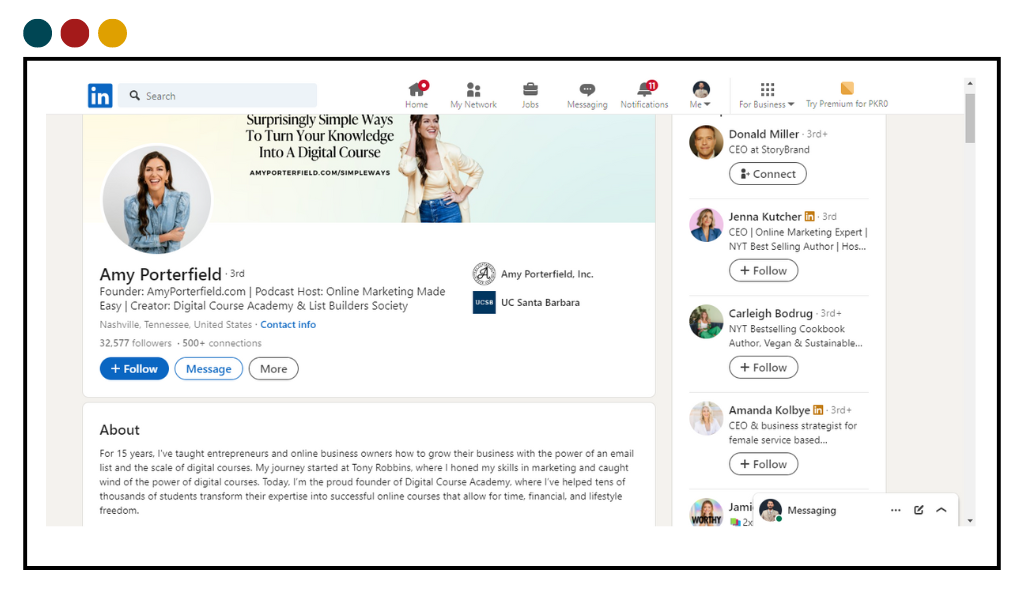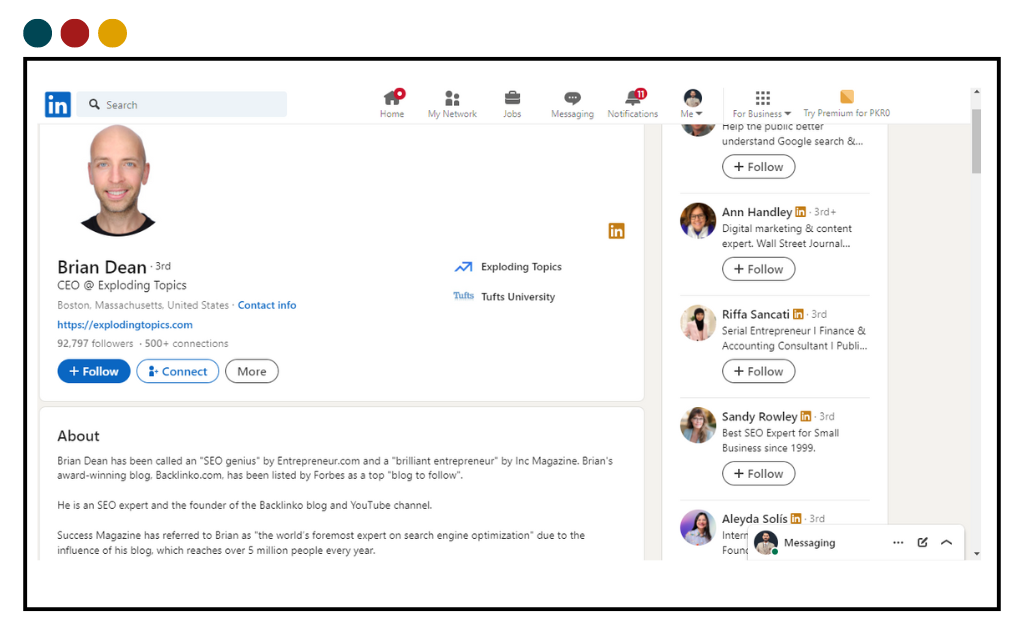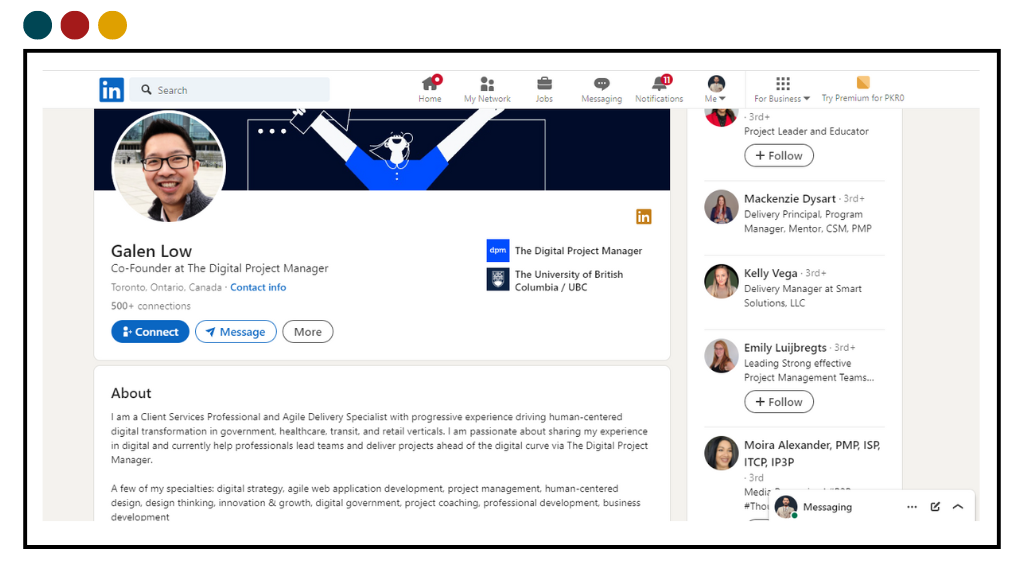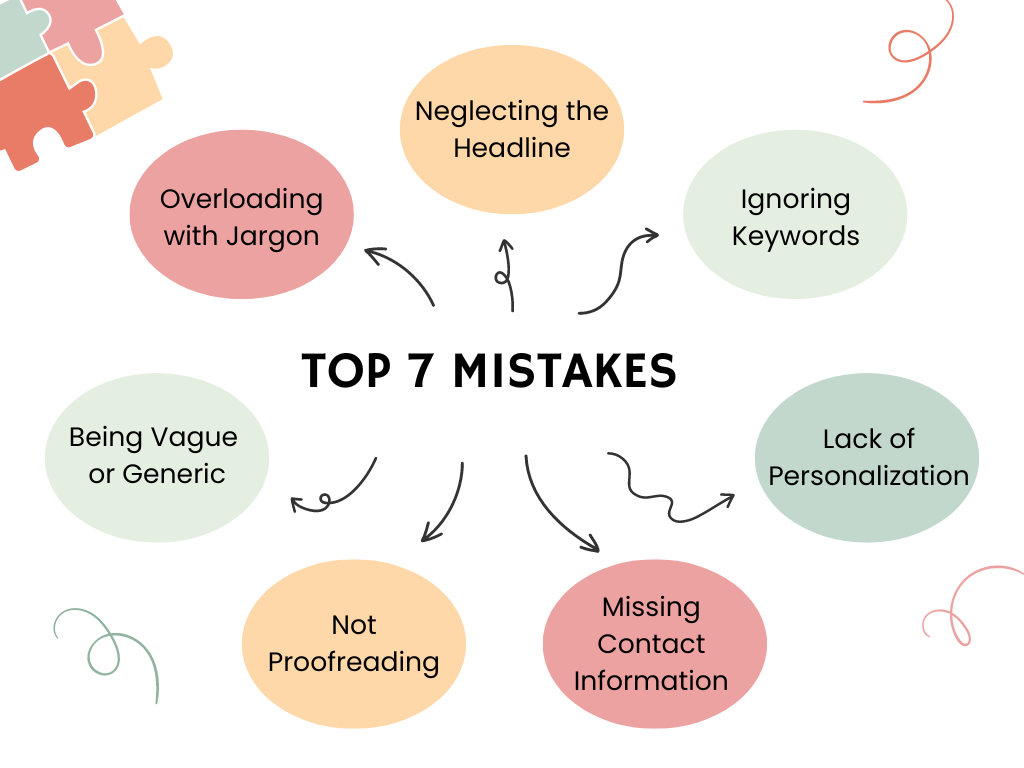![How to Write a Post on LinkedIn Looking For a Job [Sample Templates and Top 7 Mistakes]](https://kountif.com/wp-content/uploads/2024/08/How-to-Write-a-Post-on-LinkedIn-Looking-For-a-Job-Sample-Templates-and-Top-7-Mistakes-1.png)
Are you looking for a new job or considering a career change? LinkedIn is the go-to platform for professionals seeking fresh career opportunities. Crafting a captivating LinkedIn post is essential for attracting the attention of hiring managers and expanding your professional network.
Table of Contents
ToggleThis blog post will guide you how to write a post on LinkedIn looking for a Job. You’ll learn to optimize your LinkedIn profile, create engaging content, and strategically use keywords. With these tips, you’ll be well-equipped to stand out in the competitive job market.
Why LinkedIn Profile Optimization is Crucial
In the digital age, where professional networking is more significant than ever, having a well-optimized LinkedIn profile is crucial. Your profile serves as your online resume and personal branding tool. It’s where potential employers and connections will go to learn more about you.
Optimizing your LinkedIn profile ensures that it accurately represents your skills and experiences, making it easier for hiring managers to find and engage with you. A compelling LinkedIn post and a strong profile can open doors to new career opportunities.
Writing an effective LinkedIn post involves more than just sharing an update; it’s about crafting a message that resonates with your audience. In this guide, we’ll break down the process into manageable steps to help you create posts that boost your LinkedIn engagement and attract career opportunities.
Start with a Compelling and Clear Headline
Your headline is the first thing LinkedIn users will see, so make it count. A compelling and clear headline grabs attention and encourages others to read your post. Think of it as the gateway to your content, like a captivating book cover that invites readers to dive deeper into the story.
When crafting your headline, use keywords related to your industry and job role, as these keywords serve as anchors that help users identify your area of expertise at a glance. This improves your visibility on LinkedIn and makes your post stand out to hiring managers searching for specific skills and experiences. Consider headlines like “Experienced Marketing Specialist Seeking New Challenges” or “Creative Graphic Designer Ready for Opportunities.” Each headline should reflect your current role and hint at your aspirations and what you can bring to the table, giving potential employers insight into your career direction.
Tailor your headline to reflect your unique skills and aspirations. By personalizing this crucial element, you’ll attract the right audience and significantly increase your chances of finding relevant job opportunities that align with your career goals. The more specific and authentic your headline, the more likely it will resonate with those in your network.
Write an Engaging Introduction
Once you’ve captured attention with your headline, it’s time to introduce yourself compellingly. Your introduction should reflect your branding and set the tone for the rest of your post, giving readers a glimpse into your personality and professional ethos.
Start with an engaging opening line highlighting who you are and what you want. For example, “Hi, I’m Sarah, a passionate data analyst seeking dynamic roles in tech.” This establishes your identity and job search goals, creating a personal connection with your audience.
Making a strong first impression is key, as it sets the stage for how readers perceive you and your qualifications. Use your introduction to convey confidence and enthusiasm, inviting readers to learn more about your skills and experiences. A well-crafted introduction can captivate hiring managers and encourage them to explore further, ideally leading them to see you as a potential fit for their teams. Consider weaving in a quick anecdote or a personal story related to your professional journey; this can make your introduction even more memorable.
Highlight Your Skills, Experience, and Achievements
In this section, focus on concisely but effectively showcasing your relevant skills and experiences. This is similar to resume writing tips, where you want to highlight key qualifications that set you apart from other candidates.
Use bullet points to list specific skills and achievements relevant to your desired job roles, ensuring each point is impactful and quantifiable. For instance, “Proficient in SEO optimization with a proven track record of increasing website traffic by 30%.” Quantifiable achievements prove your capabilities, making your profile more persuasive and credible.
You demonstrate your value to potential employers by spotlighting your skills and accomplishments. This enhances your LinkedIn profile optimization and positions you as a strong candidate in the job market, opening doors to new opportunities and collaborations. Remember, each skill and achievement you highlight can resonate with hiring managers looking for someone who can contribute meaningfully to their organization. Consider including a summary of your work experience or a notable project that illustrates your expertise, as this can provide additional context and depth to your profile.
Define Your Job Search Goals and Preferences
Clearly stating your job search goals and preferences is essential for aligning your LinkedIn post with your career aspirations. This clarity helps hiring managers understand what you’re looking for and illustrates where you might fit within their organization. You’re taking the first proactive step in guiding your career journey by articulating your interests.
Begin by outlining the types of roles and industries you’re interested in pursuing. For example, you might say, “Seeking a project management position in a fast-paced tech company,” or “Looking for opportunities in digital marketing within the healthcare sector.” This specificity not only aids potential employers in determining if you’re a good match for their team but also helps you focus your job search on roles that truly resonate with your skills and passions.
Additionally, consider specifying the skills you bring or any relevant experiences that set you apart. Mentioning your proficiency in certain tools, methodologies, or techniques can further clarify your fit for the roles you desire. Providing concrete examples of past achievements can also illustrate your capabilities, making your aspirations more tangible to hiring managers.
Providing a focused approach to your job search demonstrates that you’re intentional and strategic in your career pursuits. It shows that you’ve put thought into your career path and are prepared to articulate your ambitions, which can significantly increase the likelihood of attracting relevant job opportunities that align with your goals. In this competitive job market, clarity about your aspirations can set you apart from others who may have yet to define their objectives as clearly. Such clarity reassures employers that you know what you want and are committed to achieving it, making you a more attractive candidate.
Incorporate Relevant SEO Keywords
To improve your post’s visibility among recruiters and hiring managers, it’s crucial to incorporate relevant SEO keywords naturally throughout your content. These keywords should align with your professional networking goals and the specific roles you’re targeting in your job search, helping you capture the attention of those searching for candidates like you.
Research job-related keywords that hiring managers commonly use when searching for candidates in your field. For example, if you’re in marketing, terms like “Content Strategy” “SEO optimization” or “Brand Management” might be pertinent. By understanding the language of your industry, you can better position yourself as a qualified candidate. Strategically place these keywords in your headline, introduction, and body content to enhance your post’s discoverability while maintaining a natural flow.
Balancing keyword usage with readability is key. Refrain from overstuffing your post with keywords, as this can detract from the overall flow and authenticity of your writing. Instead, aim for a seamless integration of keywords that enhances your post’s visibility without compromising its quality. The goal is to strike a balance that optimizes your post for search engines while making it engaging and easy to read for your audience. A well-crafted post incorporating relevant keywords will attract attention and encourage readers to take Action, whether connecting with you or considering you for opportunities.
Add a Personal Touch
While professionalism is important in a platform like LinkedIn, adding a personal touch to your post can make it more relatable and engaging for your audience. Sharing anecdotes or personal experiences allows your personality to shine through and fosters a deeper connection with your readers.
Consider including a brief story that illustrates your passion for your industry or a unique challenge you’ve overcome in your career journey. For instance, you might share how a particular project ignited your interest in project management or recount a time when you navigated a difficult situation that ultimately led to growth and learning. This humanizes your post and encourages your audience to see the person behind the resume, making them more likely to engage with you.
Moreover, sharing lessons learned from these experiences can offer valuable insights to your audience, positioning you as a job seeker and a thought leader in your field. Balancing professionalism with personality is essential for effectively engaging LinkedIn connections. You create a memorable impression that sets you apart from other job seekers by weaving personal elements into your post. This authentic approach can lead to meaningful interactions, network expansion, and potential job opportunities aligning with your career goals. In a platform that values connections and credibility, a personal touch can be your secret weapon in making a lasting impact. Remember, people connect with people, not just resumes, so let your genuine self shine through!
Include a Strong Call to Action
A strong call to Action (CTA) is essential for any engaging post, as it encourages interaction and boosts engagement with your content. Inviting your connections to share opportunities, referrals, or advice can enhance your networking strategy and create a vibrant community. A well-crafted CTA grabs attention and prompts your audience to take specific actions that lead to positive outcomes.
When creating a CTA, ensure it aligns with your job search goals and desired career direction. For example, “I’m eager to connect with industry professionals for collaborations, mentorship, or insights into market trends. Please feel free to reach out!” This encourages your network to engage and fosters meaningful conversations about potential career opportunities.
Additionally, provide context for your request by sharing what you’re working on or the skills you want to develop. Mentioning a project or specific area of expertise helps your connections understand how they can assist you, making the interaction more personalized.
You create meaningful interactions within your LinkedIn community by prompting your connections to take Action. This strengthens your professional network and increases your chances of discovering valuable job leads and insights that can advance your career. Regular engagement with your network fosters relationships that lead to new opportunities and collaborations. Remember, the more you engage, the more opportunities arise, resulting in a mutually beneficial exchange of ideas and resources. A strong CTA can ultimately unlock connections that significantly impact your career trajectory.
Top 7 Mistakes While Writing a LinkedIn Job Search Post
Being Vague or Generic
When communication needs more specificity, it can engage the audience effectively. Using broad terms or clichés often leaves the audience confused or uninterested, as they may not grasp the intended message. Instead, strive for clarity and detail that resonates with your target audience. By incorporating specific examples and vivid descriptions, you can paint a clearer picture, making your content more engaging but also relatable and memorable.
Overloading with Jargon
While industry-specific language and jargon can showcase your expertise and knowledge, overusing these terms can alienate readers who may need to become more familiar with the technical jargon. It’s essential to remember that effective communication should be inclusive. Aim for balance by explaining complex concepts in simple terms, using analogies or relatable examples to ensure your message is accessible to everyone, regardless of background or expertise.
Neglecting the Headline
A strong headline is crucial as it serves as the first impression of your content. A well-crafted headline draws readers in and sets the tone for what they can expect. Failing to create an attention-grabbing headline can result in lost interest from potential readers, causing them to overlook your valuable insights. Invest time in brainstorming and crafting a compelling headline that captures the essence of your message, sparks curiosity, and encourages further reading. Consider using action words or posing intriguing questions to enhance its appeal.
Ignoring Keywords
Keywords are vital in search engine optimization (SEO) and drive traffic to your content. Overlooking the use of relevant keywords can diminish the visibility of your content online, making it harder for potential readers to find you. Conduct thorough keyword research to identify terms that resonate with your audience and seamlessly integrate these keywords into your content. This enhances your content’s reach and effectiveness and aligns it with your target audience’s search behaviors, ultimately improving engagement.
Lack of Personalization
Personalized communication is key to building strong connections with your audience in today’s digital landscape. Failing to tailor your message to specific audiences can lead to disengagement and a lack of interest in your content. Utilize insights about your audience’s demographics, preferences, and pain points to create more meaningful and relevant content that speaks directly to their needs and interests. Personalization can include addressing the audience directly, using their names, or referencing relatable experiences, fostering a sense of connection and understanding.
Missing Contact Information
Including clear contact information is essential for fostering communication and building relationships with your audience. With this vital information, potential clients or readers may feel encouraged to reach out with questions or inquiries. It’s important to ensure that your contact details, such as email addresses, phone numbers, or social media handles, are easily accessible and prominently displayed within your content. This transparency encourages interaction and reinforces your credibility and willingness to engage.
Not Proofreading
Typos, grammatical errors, and inconsistencies can significantly undermine credibility and professionalism. Refrain from proofreading your work to avoid misunderstandings, creating confusion, and ultimately eroding trust with your audience. Take the time to carefully review your content for errors carefully, ensuring it reflects high standards and attention to detail. Consider reading your work aloud, using digital proofreading tools, or having a colleague review it to catch any mistakes you might have missed. This extra effort can significantly improve the quality of your writing and enhance your professional image.
Optimizing Your LinkedIn Profile for Job Search Success
1. LinkedIn Profile Sections Overview
| Profile Section | Purpose | Key Tips |
|---|---|---|
| Headline | Grabs attention and conveys your professional identity | Use relevant keywords; be specific and compelling. |
| Summary | Provides a snapshot of your professional journey | Highlight achievements; use a conversational tone. |
| Experience | Lists your job history and accomplishments | Quantify achievements; use action verbs. |
2. Key Skills to Highlight
| Skill | Description | Examples |
|---|---|---|
| Leadership | Ability to guide and inspire teams | Led a team of 10+ on major projects |
| Communication | Effectively conveying ideas and information | Conducted presentations to senior management |
| Project Management | Planning, executing, and closing projects | Managed multiple projects with tight deadlines |
3. LinkedIn Summary Examples
| Example | Highlights | Suitable For |
|---|---|---|
| Example 1 | Focuses on leadership and innovation | Executives and Managers |
| Example 2 | Emphasizes technical skills and achievements | Technical Specialists |
| Example 3 | Showcases creativity and problem-solving | Creative Professionals |
Top 5 Template Samples
Template 1: The General Job Seeker
- Headline: “Experienced Marketing Professional Seeking New Opportunities”
- Introduction: “Hi LinkedIn, I’m [Your Name], a passionate and dedicated marketing professional with over 5 years of ExperienceExperience in driving successful marketing campaigns and building brand presence in competitive markets. I thrive in collaborative environments and am excited to connect with others in the industry.”
- Skills & ExperienceExperience: “My expertise encompasses digital marketing, content strategy, and SEO, with a proven track record of increasing web traffic and engagement through targeted initiatives. I have successfully managed cross-channel marketing campaigns, leveraging social media, email marketing, and analytics to achieve significant results.”
- Job Goals: “I’m actively seeking a new role in digital marketing where I can leverage my skills and creativity to contribute to a dynamic team. I am particularly interested in opportunities that allow for growth and innovation, where I can make a meaningful impact.”
- Call to Action: “If you know of any openings or opportunities that align with my background, please feel free to reach out or connect! I would appreciate any referrals or advice as I embark on this next chapter in my career.”
Template 2: The Industry-Specific Seeker
- Headline: “IT Specialist Seeking Software Development Role”
- Introduction: “Hello everyone, I’m [Your Name], an IT specialist with a focus on software development. I have a passion for creating efficient and innovative software solutions that enhance user experiences and streamline processes.”
- Skills & ExperienceExperience: “With extensive ExperienceExperience in Java, Python, and project management, I bring a strong background in both coding and agile methodologies. My projects have ranged from developing web applications to managing cross-functional teams, which has honed my ability to deliver high-quality software in fast-paced environments.”
- Job Goals: “I am seeking software development positions that not only challenge my skills but also promote personal and professional growth within a dynamic team.”
- Call to Action: “Feel free to connect if you have any leads, insights, or would like to discuss potential opportunities in the software development field.”
Template 3: The Recent Graduate
- Headline: “Recent Computer Science Graduate Looking for Entry-Level Opportunities”
- Introduction: “Hi LinkedIn, I’m [Your Name], a recent graduate in Computer Science with hands-on ExperienceExperience in various programming languages and technologies. I am excited to apply my knowledge in a real-world setting and make a meaningful impact.”
- Skills & ExperienceExperience: “I have developed skills in coding, problem-solving, and teamwork through my academic projects, where I collaborated with peers to build applications and tackle complex challenges. My internships have provided me with practical ExperienceExperience in software development and reinforced my strong analytical abilities.”
- Job Goals: “I am eager to kick-start my career in software engineering and contribute to innovative projects that push the boundaries of technology.”
- Call to Action: “I’m open to internships and entry-level roles in software development. Please reach out if you have any opportunities or advice to share!”
Template 4: The Career Changer
- Headline: “Experienced Sales Professional Transitioning to Project Management”
- Introduction: “Hello, I’m [Your Name], a sales professional with 7 years of ExperienceExperience looking to transition into project management. Throughout my career, I’ve developed a keen interest in how effective project management can drive success and ensure client satisfaction.”
- Skills & ExperienceExperience: “My background in sales has equipped me with essential skills in leadership, organization, and client relations. I have successfully managed multiple sales initiatives and collaborated with diverse teams, which has provided me with valuable insights into managing projects and meeting tight deadlines.”
- Job Goals: “I am seeking project management roles where I can apply my skills in leadership and strategic planning, and effectively manage projects from inception to completion, ensuring all goals are met.”
- Call to Action: “If you have leads, insights, or advice for transitioning careers into project management, I would love to connect and hear your thoughts!”
Template 5: The Freelance Professional
- Headline: “Freelance Graphic Designer Available for New Projects”
- Introduction: “Hi LinkedIn, I’m [Your Name], a freelance graphic designer with a passion for creative design. With over [X years] of ExperienceExperience in the industry, I thrive on transforming ideas into visually compelling concepts that resonate with audiences.”
- Skills & ExperienceExperience: “I specialize in logo design, branding, and digital art, with a portfolio showcasing my work across diverse industries, from startups to established brands. My design approach combines creativity with strategic thinking, ensuring that each project not only looks great but also achieves its intended goals.”
- Job Goals: “I’m available for freelance projects and eager to collaborate with businesses and individuals who are looking to enhance their visual identity. Whether you’re launching a new product or refreshing your brand, I’m here to help bring your vision to life.”
- Call to Action: “Feel free to contact me for design projects, collaborations, or referrals. I’m excited to take on new creative challenges and contribute to your success!”
Conclusion
Crafting a compelling LinkedIn post is crucial for job seekers looking to stand out in the competitive job market. By optimizing your LinkedIn profile, creating engaging content, and strategically using keywords, you can increase your visibility and attract potential employers. Remember to highlight your skills, experience experience, and achievements and include a strong call to Action to encourage connections and opportunities. With these tips, you’ll be well on your way to writing an effective LinkedIn post that elevates your job search.
FAQs
What are the benefits of optimizing my LinkedIn profile?
Optimizing your LinkedIn profile increases your visibility, helps you stand out to potential employers, and showcases your skills and experience.
How can I make my LinkedIn post more engaging?
Use a compelling headline, write a clear and concise introduction, highlight your skills and achievements, and include a strong call to Action.
What keywords should I use in my LinkedIn post?
Use relevant industry-specific keywords and phrases that align with your job search goals and skills.
How often should I post on LinkedIn?
Post regularly to keep your connections engaged and up-to-date on your job search progress, but avoid overposting to maintain a professional image.







